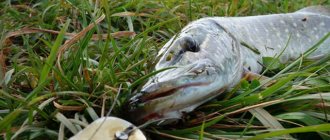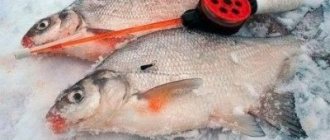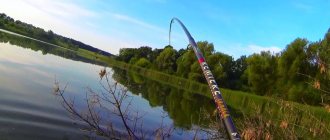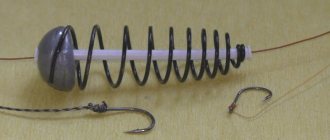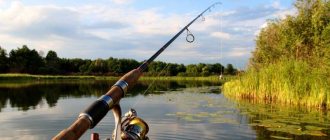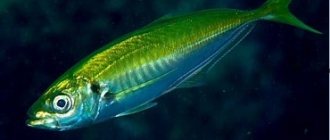In this article, we have collected for you recommendations on choosing, storing and attaching live bait for successful pike fishing, we talked about the gear and equipment used, how to properly catch the predator with a spinning rod and a float rod, and the peculiarities of fishing for this type of fish according to the season.
So the first question is: what bait should I use?
For pike fishing, juveniles of the following fish are used:
- roach;
- goldfish;
- perch;
- loach;
- gudgeon;
The less suitable species are the redhead, which very quickly loses mobility and falls asleep on the hook, broad-bodied white bream, and white bream.
The pike ignores the prickly ruff attached to the hook, which is most often eaten by pike perch.
Requirements for live bait
When choosing live bait for pike fishing, make sure that it matches the prey and is mobile:
- The most popular and successful live bait for catching pike is silver crucian carp.
The size of pike bait should be from 4-5 to 8-10 cm: smaller live baits are most likely to be attacked by small sailors and medium-sized perches. Fish over 10 cm in size, in most cases, are too tough for only a large pike. In addition, a large and sufficiently strong live bait can create the appearance of a bite - for example, in winter such a large fish, moving, can cause the alarm flag to rise. - Caught or purchased live bait released into a container with water must be active, not fall on its side when moving, and in no case turn over with its belly up.
In addition, there should be no serious damage to the body of the fish: they can lead to the fact that the baitfish very quickly loses its mobility, dies and ceases to attract pike.
Choice of live bait
The final result of fishing with this fishing method is directly affected by the bait, that is, the live bait itself. Only the right fish can attract the attention of a predator and provoke it to attack.
Catching pike with live bait from the shore will be successful if species familiar to it are used to form the gear. The best options are:
- crucian carp;
- roach;
- minnows;
- ruffs;
- bleak;
- perched water;
- rudd;
- perches.
It is worth understanding that in order to catch large specimens, the live bait must not be small . Fish for trophy pike are placed on a hook of 350 g or more.
How to catch live bait?
You can catch live bait directly on the pond using several basic gear:
- Float tackle. To do this, use a short 4 - 4.5 meter lightweight carbon fiber rod with sensitive equipment, including a fishing line 0.12-0.14 mm thick, a float with a weight of up to 1 gram, a small swallow hook No. 18-19 according to the international classification or 2-2.5 according to domestic standards. As a bait, depending on the season, use bloodworms, maggots, mastyrka, and dough.
- Jig tackle. To catch live bait in a pond in winter, use a light balalaika-type fishing rod with a thin line with a cross-section of 0.08-0.1 mm and a small tungsten jig. The nods in this gear are made of lavsan, sensitive, 8-10 cm long. Catch live bait at shallow depths, using small bloodworms as bait. If you are actively biting and using small sports jigs, you can refuse bloodworms.
- Malyavochnik is a lift consisting of a fine mesh sheet measuring 1x1 meter, four arches made of springy wire and a bracket (cross). Fix the wire arcs with one end in the corners of the mesh fabric, and the other in the holes in the bracket. Using a string fixed to a bracket, tie the resulting tackle to a long thick stick.
Malyavochnik
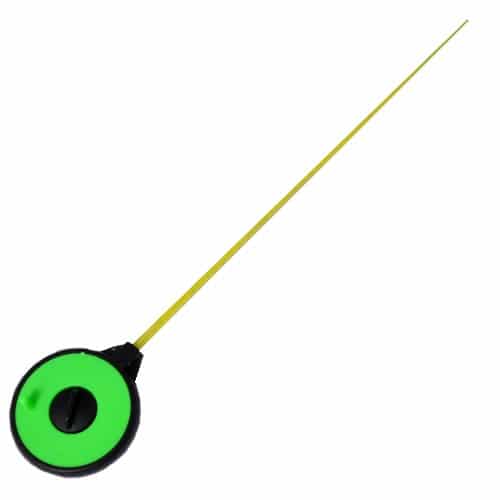
Jig tackle

Get live bait using small fish in places where there are a lot of them.
To attract fish, pour the bait mixture into the special pocket at the bottom of the canvas:
- breadcrumbs;
- bran;
- small food bloodworms;
- chopped worms.
Equipment of a float rod for catching pike with live bait
As I already wrote in previous articles, depending on the fishing conditions, there are “float fishing rods with running equipment” and “dead tackle”. In order not to repeat myself, I will leave links to articles where this is discussed in detail:
How to assemble a float rod
How to fish with a float rod without a reel - blind tackle
How to fish with a float rod and reel - a float rod with a running rig
The design of the fishing rod for pike fishing is the same as described in the above articles. When equipping a float rod, you should take into account the characteristics and habits of the fish, in this case pike. Our predator has sharp teeth that can bite through the fishing line, the fish itself is large, when fishing it strongly resists, and sometimes even jumps out of the water to free itself.
It is imperative to take into account the weight of the fish, i.e. what is the maximum weight of pike expected. I understand that you want the more, the better. What if there are simply no such “monsters” in the fishing area? The usual weight of a trophy is up to 2-3 kg. Of course, you can set yourself up to catch larger “crocodiles”, but their numbers are smaller and there may not be any at the fishing site. And I will also repeat that the article is about equipping a cheap float rod, which is unlikely to support fish weighing more than 3 kg.
I will share an incident from my life. Once I caught pike with live bait using a float rod. In my hands I had the most ordinary budget 5-meter fishing rod with rings and a simple reel. A very large fish pecked at a small baitfish, 8 cm long. I can’t tell its weight because I couldn’t pull this fish out. I didn’t have time to lower the fishing line from the reel, the fishing line tightened sharply, the fishing rod bent into an arc and, grunting... the third knee from the top broke. I immediately grabbed the fishing line, hoping to pull the fish out by it, but I was too late, the fishing line was already broken.
What's this conversation about? If you use budget fishing rods, then you won’t be able to pull out very large specimens, which means you shouldn’t use thick fishing line or braid in case an 8-kilogram pike bites.
Based on the above, I suggest the following equipment:
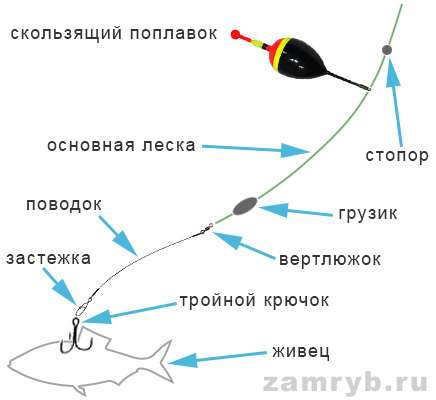
Rod 4-5 meters. I fished with 6-meter ones, but they seemed uncomfortable to me; it’s hard to fish in windy conditions. You can fish with 3-meter float rods, but I don’t fish because I have a spinning rod of the same length. Therefore, when I can use fishing rods with running equipment and a length of 3 m, I pick up a spinning rod.
Monoline from 0.22 to 0.28 mm, optimal size - 0.26 mm, maximum - 0.35 mm. When catching fish up to 3 kg with blind tackle, this is enough, even with a reserve. Of course, you also need to take into account the quality of the fishing line. I pulled out kilogram pikes on good quality monofilament with a diameter of 0.14 mm.
Float and sinker. It is important to follow the rule - the float should not sink under the weight of the sinker and live bait. You shouldn’t let the baitfish drown it, but let it drag it around the pond. For example, if a float for live bait with a carrying capacity of 30 grams, then put a weight weighing 25 grams. If the float has a lifting capacity of 6 g, use a 4 g weight. I hope the meaning is clear, that is, the weight of the sinker is slightly less than the norm indicated on the float. You choose the type of float (sliding or regular) according to the situation or based on personal preferences (read the articles mentioned above about floats).
It is better to use a leash made of material that the pike cannot bite through. But it should be remembered that on a metalized leash, live bait moves worse and dies faster than on a monofilament line. Therefore, using a leash made of monofilament, more bites are observed. However, as mentioned above, there is a risk that it will be bitten by a predator when it swallows the hook deeper. As you gain experience, decide for yourself whether your tackle needs a metallic leash or not. To begin with, I recommend using metallic “cable” leashes 20-40 cm long, equipped with a swivel and clasp.
I use hooks for pike No. 8.5-11 according to the Russian classification (see table Classification and numbering of fishing hooks). I prefer treble hooks, but double and single hooks can be used.
Small roach, perch, rotan, bleak, gudgeon and other small fish can be used as live bait. Pike weighing up to 2 kg bite on live bait measuring 8-12 cm. They can even take a fry only 5-6 cm long, but usually perch is caught on such fry. For larger pike, the live bait should be larger - about 18 cm or more. They catch live bait on the spot or bring it with them. Therefore, take care of a container for storing live bait so that they swim there alive.
There are different ways to hook live bait. The most common one is hooked onto the back. It is important not to damage the spine of the baitfish during baiting, otherwise the baitfish will become inactive and quickly die. Try not to pierce the area below the dark colored back with the sting. You need to cast and pull out live bait smoothly, without jerking, so the bait will be more intact.
How to store bait?
During the entire storage period, periodically replace the water and clean the container.
For long-term storage of live bait, use large wooden or plastic barrels with rain or melt water, small ponds in the garden, spacious aquariums with an air supply system.
Periodically feed the live bait with small bloodworms, chopped worms, and breadcrumbs.
Feed portions should be small - this will prevent the presence of residues, their rotting and acidification of the water.
During the entire storage period, periodically replace the water and clean the container.
In order to preserve live bait in a pond, use large buckets that can be closed with lids and can hold 6-8 liters of water or special containers - cans.
During the hot season, keep containers with live bait in the shade, changing the water every 1.5-2 hours.
In winter, during severe frosts, when the water in the container freezes, make sure that very thick ice does not form, which will prevent the flow of oxygen into the water and the gradual falling asleep of live bait.
How to properly mount live bait?
To ensure that the live bait stays securely on the hook, while maintaining its mobility and attractiveness to the predator, use the following methods of hooking it:
- Behind the back - using one of the double or tee hooks, carefully pierce the back of the fish just above the fin located on it. Try not to damage the spine of the baitfish, as this will completely immobilize it.
- For the upper lip - use a hook to carefully pierce the upper lip of the bait fish. The puncture should be as far from the edge as possible - the lips of a small fish are very weak and tender, and if the puncture is too close to the edge, the live bait can easily tear the lip tissue when jerking and come off the hook.
- Through the gills - a metal leash with the double removed, pass one end through the gills of the live bait and out through the mouth, then attach the hook to it. In order to finally fix the live bait, gently pull the leash with the attached double, allowing the hooks to rest their hooks on the edges of the fry’s mouth.
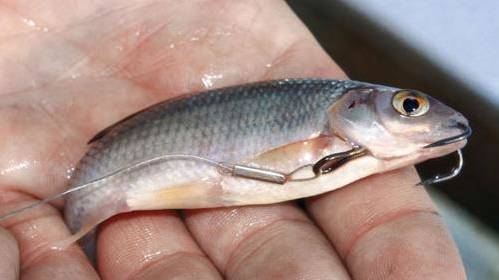
Through the gills
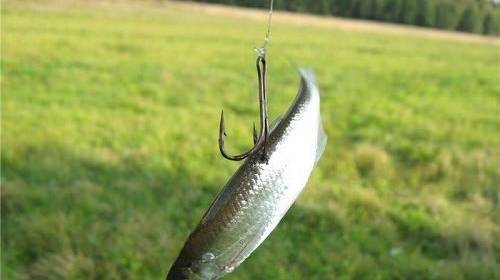
Through the back

For the upper lip
Methods for securing live bait
To set live bait firmly, you can use either a single hook or a double hook. The hook is easily attached to the back of the baitfish. When using a double, the second hook should pass in the gill area.
It is best if the bait fish lives in the same body of water in which it will be fished. She must be resilient and not fall asleep for a long time. For active fishing on the river, goby, gudgeon or spined lance are best suited.
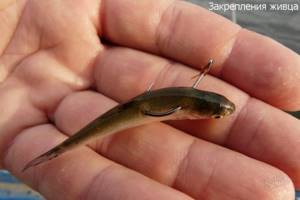
Pike has a “special love” for bleak, but it falls asleep too quickly after being fixed on the hook. To catch as many fish as possible, it is important to remember that the baitfish must be active.
Fishing tackle
In different seasons - in open water and during freeze-up - use several gears to catch pike with live bait:
- Spring-autumn season (open water) - at this time, catch pike with live bait float rods, spinning tackle, mugs, summer girders. Use float rods along with girders more often on reservoirs with standing water or a small current. Use spinning both for stationary fishing, in which live bait is thrown into a certain place, and for casting fishing into the wire. Fish with circles both in reservoirs with standing water and in the presence of a slight current.
- Ice fishing season - in winter, use winter poles (stakes) to catch pike with live bait.
When choosing a float rod or spinning rod for catching live bait, pay serious attention to their components:
Rod
For float bait tackle, use fly or Bolognese carbon fiber rods 4-6 meters long. The choice of length and type depends on the conditions of the reservoir - on small rivers and ponds, fish with short fly rods; for large reservoirs, use 5-6 meter Bolognese rods.
When fishing with a spinning rod, use hard blanks 2.4-2.7 meters long with a dough of over 25-30 grams.
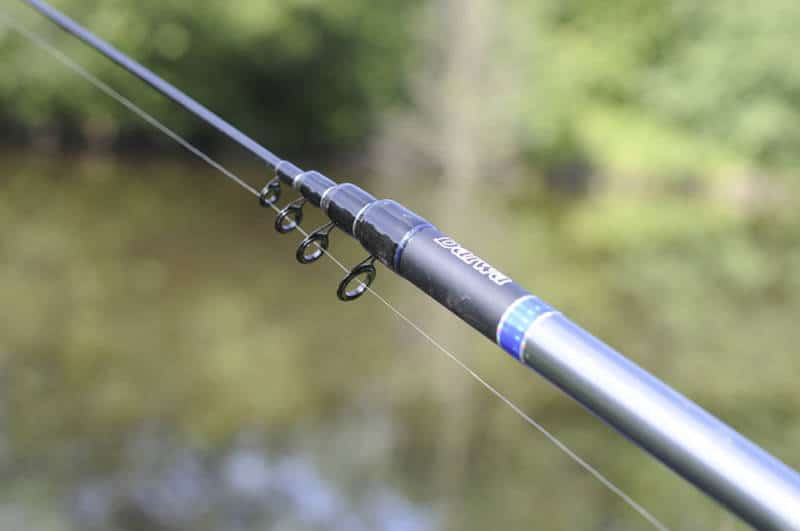
Bolognese fishing rod
Coil
When fishing with a Bologna-type live bait float rod, you can use both small and simple drum-type reels and small inertia-free reels of size 500-1000.
In spinning live bait fishing, use high-speed spinning reels of medium size 2000-2500.
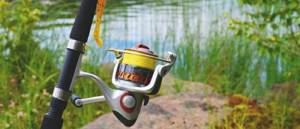
For spinning live bait fishing, use high-speed, medium-sized spinning reels
Equipment
On a float fishing rod, it is best to use a simple monofilament line with a cross-section of 0.25-0.3 to 0.4 mm, a clearly visible large float, an olive sinker, a metal leash 15-20 cm long and a hook (double or triple) No. 6 -4.
The thickness of the fishing line, the size of the float, the size of the hook depend on the weight and mobility of the live bait, the size of the intended prey - the more live bait and the larger the pike in the reservoir, the coarser and stronger the equipment should be.
Spinning live bait equipment consists of a braided cord with a cross-section of no more than 0.18 mm, a live bait float (when fishing with stationary live bait), an olive sinker, a metal leash, a double or triple hook
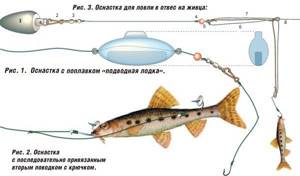
Equipment for live bait fishing
Useful tips
Catching pike with a float will become more effective if you know and apply some useful tips from more experienced comrades who use this tackle regularly. To always be with a catch you need to know this:
- the more pike we want to catch, the more bait we put on the hook;
- after catching a trophy variant, it is worth changing the place of fishing, the pike is single, there is only one predator in one place;
- It is recommended to use this tackle in spring and late autumn, but sometimes in summer a float can bring good trophies;
- An excellent option for bait are crucian carp, roach, and small minnows;
- When choosing a rod blank, preference should be given to more rigid options, this will allow you to make the hook more efficiently.
Catching pike with a float rod will bring many unforgettable moments for both beginners and more experienced anglers. Forming the tackle will not create problems for anyone, but it is still better to ask advice from more experienced comrades.
You can ask your question to our author:
Gear assembly
The procedure for installing live bait gear is as follows:
- Install the reel on the rod.
- Pass the fishing line or cord through the guide rings of the entire rod (when assembling a float tackle) or its lower part (when equipping a spinning rod) and secure it with a secure loop on the reel spool.
- While holding the line or cord taut, rotate the reel handle to wind it evenly onto the spool.
- Attach a float and sinker to the fishing line.
- Attach a metal leash with a hook to the end of the fishing line.
The use of circles and girders
A circle is a floating vent consisting of a foam or cork disk, different sides of which are painted red and white. The tackle has a groove for winding the equipment. A pin passes through the center of the disk, which has a cutout in the end for the fishing line at one end, and a spherical stopper at the other.
Fishing with this tackle is not difficult:
- Live bait is placed on the hook of the rig.
- The circle drifts during the fishing process under the influence of the wind and current.
- When a pike grabs a live bait, the circle turns over, the fishing line comes out of the cutouts on the disk and unwinds freely.
- All that remains is to make a short and sharp hook and fish out the pike, not allowing it to go into the grass, snags or under the boat.
Fishing with mugs allows you to fish quite large areas. The main disadvantage of this method is the mandatory presence of a boat.
The zherlitsa is a wooden flyer with a figure eight of equipment wound on it.
Unlike circles, this tackle does not require a boat and the whole process of fishing with it is very simple and accessible to anyone:
- Tie the slingshot with the equipment with strong twine to a long pole.
- Unwind the required amount of fishing line.
- Clamp the fishing line in the split at the end of one of the slingshot branches.
- Place live bait on the hook.
- Insert the six sharp ends into the shore at such an angle that the distance from the girder to the water is no more than 50 cm.
- When biting, the pike pulls the line out of the split and unwinds it freely from the flyer.
- As a rule, you no longer have to hook when fishing with this tackle - in most cases, the pike, having swallowed live bait, hooks itself. All that remains is to pull her out of the water onto the shore.
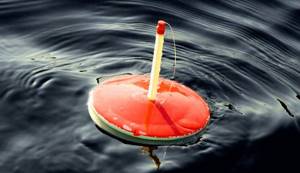
Fishing with mugs
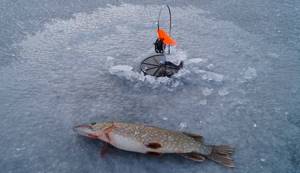
Fishing with a zherlitsa in winter
Main types of fishing
Using live bait, pike can be caught in any body of water, with or without current, using several types of gear. Each of them will be effective, the main thing is to choose a promising place.
Catching pike with live bait is still a rare occurrence these days, but this method also exists. You can meet fishermen on the shore with the following gear:
- mugs;
- donks;
- float tackle;
- running donka;
- summer girders.
Of the above methods, only three are popular; we will learn about them in more detail later.
Reliable DIY leash
The main material for a homemade metal leash is guitar string No. 2, which can be purchased at any store that sells musical instruments. The length of the string is 1 meter and allows you to make 3-4 leashes.
The manufacturing process is simple and requires a minimum set of tools and skills to work with them:
- Cut 20-22 cm from a meter string.
- At the end of the segment, fold a regular double loop.
- Hook the loop onto the hook inserted into the screwdriver chuck.
- Secure the loop using pliers.
- Rotating the hook by pressing the screwdriver button, make a pigtail (twist) with a ring in place of the loop.
- Similarly, make a braid with a ring at the other end of the leash.
The leashes obtained in this way are characterized by low costs and sufficient reliability.
How to catch pike?
Selecting a location
Where pike stay in a pond largely depends on the season:
- Spring - at this time, pike, in the pre- and post-spawning periods, prefer to stay in shallow, well-warmed areas of reservoirs.
- Summer - during the summer months, pike spend most of their time in the coastal zone among aquatic vegetation, under branches hanging over the water. Large specimens are kept in holes and deep pools.
- Autumn - until the weather gets colder and aquatic plants begin to die off, pike stays close to the shore, then, with a decrease in water temperature, it begins to gradually move to the depths.
- Winter - on the first and last ice, pike prefers to hunt in the coastal zone; in the dead of winter it is located on deep edges, in holes, and channel ditches.
Techniques for catching pike with live bait
The technique of catching pike with live bait, consisting of casting, retrieving, hooking and retrieving, is somewhat different for a float rod and a spinning rod.
Fishing rod:
- For large predators, in order not to break the rod and not miss the prey, it is better to cast for a while
. Cast the rig with bait bait correctly: with a gentle pendulum movement, trying not to hit the fish too hard on the water. - Periodic movement. Move the live bait every 30-40 minutes, which will increase its mobility and reduce the risk of falling asleep. To move the rod tip, use short, smooth movements.
- Sweeping. Hook if the float suddenly goes under the water or quickly begins to move to the side.
- Fishing. Fish out small and medium-sized pike as quickly as possible, without giving it the opportunity to tangle the fishing line in nearby grass or snag branches. In order not to break the rod and not miss the prey, it is better to lead a large predator for a while, then slowly pull the fish to the shore and, without lifting it from the water, put it in a landing net or hook it with a hook.
Spinning:
- Cast the bait fish attached to the hook carefully
. Cast. Cast the hooked baitfish carefully. The fish should be thrown a short distance - up to 15-20 meters - and its flight should occur as close to the surface of the water as possible. - Wiring. After all the equipment has touched the water, wait a while and make 3-4 smooth turns with the reel handle, moving the bait a short distance from the original point. After waiting for some time, perform smooth winding again.
- Sweeping. Hook at any suspicious strike that is clearly felt by the hand holding the rod.
- Fishing. When fishing for hooked pike, position the blank so that the angle between it and the water is about 40-450, adjust the friction brake in advance to allow the fishing line or cord to come off when the critical load for the blank is reached. Bring small and medium-sized pikes to the shore by evenly winding the line with a reel, fish out large ones using the “pumping out” method - after pulling the line with a rod, very quickly reel out the resulting slack with a reel and again perform pulling and reeling in the slack until it is possible to bring the fish into landing net or take it with a hook.
Fishing tips
When fishing for pike, follow the time-tested and experience-tested recommendations of anglers:
- Catch pike in places where there is a large concentration of small fish - the predator visits such areas with enviable regularity.
- Small pike live in shallow coastal depths, while large ones live on the contrary. Therefore, you should not hope to catch a trophy pike in shallow water and in grass thickets.
- When choosing live bait, always pay attention to the integrity of its fins and gills - a fish with damaged fins and diseased gills will be inactive and quickly fall asleep.
- When catching a small pike, carefully , without injuring the fish, remove the hook from its mouth and release it into the reservoir - this will give you the opportunity to hope to catch large fish here in the future.
Choosing live bait for effective pike fishing
The type of fish is not so important for a predator based on its taste preferences; the basis of the diet is its familiarity with pike. The most suitable option would be live bait for pike from its habitat. For the fisherman, from this perspective the situation is a little different. He needs live bait material that, throughout fishing, will show its vitality and sufficient activity to attract the lured fish to attack. Next, we will present information on the optimal selection of the type of fry and describe some methods that allow you to quickly catch live bait.
What kind of fish is suitable for bait?
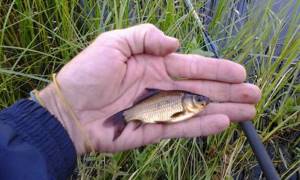
Catching fish with live bait initially implies excellent endurance of the live bait material, which makes it possible to install equipment for a long time without checking the bait, monitoring the gear only based on signs of the presence of a bite. Having decided on the species composition of the inhabitants of the fish fauna of the reservoir, the fisherman selects the most hardy fish species for equipment for fishing with live bait. The most tenacious and active fish species include crucian carp, gudgeon, carp and loach. The second echelon of live bait material includes roach, ruffe, silver bream and bream. The most sleepy and short-lived on the hook are perch, bleak, pike, roach and chubs.
Important! Ideally, gear for catching pike with live bait is initially loaded with heterogeneous material, moving on to more catchy baits as fishing progresses.
How to catch live bait
There are two optimal ways to catch live bait directly on the pond when hunting for catfish. The first method involves fishing with a fly rod in shallow water in a prime location. Bloodworms or maggots are used as bait; the fry react more actively to them than to plant baits. The bait is crumbly fish feed with the addition of attractants with a sweet taste. For example, a bag of vanilla in the feed will lure almost any type of carp fish to the table at the bottom.
The second method is more mining and is based on the use of a fine-mesh lift. The lift is allowed in dimensions of 1x1 meter. Fry are also caught in the shallows, but closer to the thickets or coastal overhangs. In such places, fry hide from predators in whole flocks. If the activity of the fish is weak, the option of feeding bait on the canvas of a lift installed at the bottom of the reservoir will be useful. Only in this case is the lifting of the device done after a longer period of time. When caught, the material is sorted, selecting the desired size of baitfish and focusing on its hyperactivity.
Important! If possible, live bait fishing should be planned in advance of fishing. Otherwise, the absence of a fry will derail any well-developed strategy. If you have doubts about the possibilities of catching bait in a reservoir, then it is better to play it safe by purchasing bait for at least one batch of bets.
Storing Live Bait
The caught fish should be supplied with at least half of the fishing gear. Based on this requirement, the angler must be able to keep the bait in perfect condition. The fry is most susceptible to oxygen starvation, and this is especially noticeable in extreme heat. If crucian carp can live in captivity for several days in the shade and with frequent changes of water, then roach without aeration will not last even two hours in a live bait bucket. Therefore, a pike fisherman should have a small battery-powered compressor in his arsenal. A live bait bucket of seven or ten liters for thirty fish bait is a completely suitable vessel.
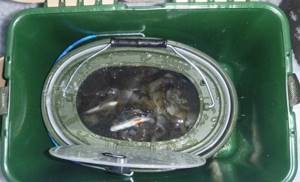
In winter, insulated versions of dishes with a smaller volume are used for more convenient transportation, and the oxygen deficiency in cold weather practically disappears for any type of live bait material. To store live baits at home, containers starting from forty liters are used. Cannas are installed in cool places and preferably in unheated rooms; a balcony in an apartment is a completely suitable place, only by insulating the containers in severe frosts and freeing the surface of the water from ice crust formations. In the summer, to store the nozzles, they are placed in refrigerators in containers of suitable volume on the lower shelves. With proper temperature and oxygen conditions, even roaches in captivity live for three to four months.
Important! The fish are fed no more than once every two weeks with a minimum amount of fish feed and the water is changed the next day.
Hooking

The attachment of live bait to the hook depends on the type of fish and fishing conditions. As hooks, both single hooks with an elongated fore-end and double hooks are used, as well as rigs where the use of tees does not affect the survivability of the nozzle. You can mount a fish on a hook by piercing the back or tail of the bait with a sting. At the same time, pay attention to ensure that the fry’s spine is not damaged. In some cases, mounting the attachment by the lips is justified. The use of double hook shanks without soldering makes it possible to hook fish through the gills.
Important! This installation allows you to keep the fish in an active state for a long time, and when the float tackle is thrown onto a pike, the loss of bait is much less than when it is hooked on the back or lips.
Features of fishing by season: winter, spring, summer and autumn
Spring
In spring, look for pike near spawning grounds in shallow water areas well warmed by the spring sun.
At this time, when fishing at a short distance from the shore, use girders and float rods.
Since the predator is weakened by spawning and is less likely to waste energy on attacking and swallowing large prey, place small live baits.
In the spring, do not forget that in each region there are certain deadlines for the ban on pike fishing.
Summer
Summer heat makes pike sedentary and passive. It feeds mainly in the early morning and late evening, when the water cools down. During the day, most often it stands motionless in thickets of reeds, under the leaves of a water lily, in places where there is shadow or cool springs.
To catch pike in the summer, use girders and mugs, which you leave in selected areas for a long time. Use small live baits. Give preference to crucian carp and roach, which are able to maintain mobility for a long time without falling asleep.
Autumn
In autumn, fishing is the most productive and exciting, when aquatic vegetation begins to die off, the water temperature drops significantly and steadily - this serves as a “signal” for the beginning of the autumn pike feast.
At this time, pike feeds along the shore for 1-1.5 months, and after the first persistent night frosts it begins to move towards the depths.
At the beginning of autumn (September, October), use float tackle, flyers, and as it moves to deeper places, use mugs and spinning rods to catch pike.
You need live bait that is large enough and agile.
Winter
In winter, pike are most active at the end and beginning of the ice fishing season. According to the first ice and the last ice, look for it in shallow areas adjacent to the shore, with a depth of no more than 2 meters, near gullies and thawed patches, in places where streams of melted, oxygen-enriched water flow into the reservoir, near the mouths of streams and small, early-opening from ice, rivers.
In the middle of winter, place vents mainly at great depths, in holes, whirlpools, above edges and channel ditches.
The main and only gear that can be used for ice fishing for pike is a winter girder - bet.
Among live bait, give preference to lively perch and roach, small crucian carp.
Secrets of fishing with live bait
Catching pike with live bait is quite simple; all of the above gear is easy to use and assemble. It is not at all necessary to buy expensive elements for equipment; many things can be replaced with something at hand. Experienced fishermen recommend:
- You first need to collect the gear, and for fishing with a float, the girders can be mounted directly on the shore if you have the other components.
- An empty plastic bottle, a wooden spear, or simply tying the base to the bushes on the shore are often used as a reel for the girder.
- For fishing with a float, it is advisable to make a float yourself. To do this, you only need a piece of foam plastic, an awl, bright varnish or waterproof paint.
- Fishing with live bait can be carried out both from the shoreline and from a watercraft. The boat is used to arrange the poles and circles, and then to collect the catch.
The rest of the subtleties of fishing will come after several fishing trips; the fisherman himself will be able to see and easily distinguish good bait from bad bait, and also skillfully assemble the gear.
Now everyone knows how to catch pike with live bait from the shore and what is needed for this. You shouldn’t be afraid, you should try to experiment, then you’ll definitely end up with a catch.
You can ask your question to our author:
Blitz tips
Tips and tricks:
- When choosing live bait , focus, first of all, on the species composition of food fish for pike in a particular reservoir - the predator is reluctant to take fry that it has not previously seen in its hunting grounds.
- the hook size taking into account the size and mobility of the live bait - for small fish use small double hooks, for larger ones - triple hooks.
- In order to attract a pike to a bait fish attached to a hook when the bite is weak or absent , throw a mixture of sand and any dusty bait under the float - this will attract schools of small things, after which the pike may approach. When attacking a school, the probability that the predator will swallow the live bait that is limited in movement by the equipment is very high.
- Hook the pike quickly enough , otherwise it may be inconvenient to remove the live bait with the hook directly from its belly.
- When removing the hook from the mouth of a predator, use an extractor. This will avoid painful and abscess-causing cuts from the pike's many sharp teeth.
Take action!
When fishing for pike in an unfamiliar body of water - a small river with an average current:
- In order to replenish the supply of live bait, if necessary, take with you a small 3-4 meter float rod.
Use two types of gear - a float rod and a girder. The gear is pre-prepared at home so as not to have to modify it directly on site. - It is better to use a float rod with a 5-meter fly rod. Assemble the equipment of such a fishing rod from 4.5-5 meters of monofilament fishing line with a cross-section of 0.25-0.3 mm, a large float with a long bright-colored antenna, an olive sinker weighing no more than 8 grams, a metal leash 15-20 cm long, a double or treble hook No. 4-6. Wrap all the equipment on a plastic or wooden reel 20-25 cm long.
- Assemble the equipment of the girders from the same components with the difference that increase the supply of fishing line to 10 meters and do not install a float.
- In order to replenish the stock of live bait if necessary, take with you a small 3-4 meter float rod with light and sensitive equipment or a small fish.
- Having arrived at the place, before starting fishing, as silently as possible and, if possible, without getting very close to the water, walk along the bank of the river and find places where the pike can stand in ambush, waiting for a fish swimming past - this is the border of thickets of aquatic vegetation and clear water, trees fallen across the riverbed, overgrown quiet and shallow backwaters.
- If you didn’t take live bait with you , then if there are feeding places in shallow waters, you can very easily catch it with a small fish or a light float rod.
- After the places have been selected , cast the poles - unwind a fishing line on each of them 5-10 cm long less than the depth in the selected place, fix it in a split on one of the slingshot branches, tie the tackle with twine to a pre-prepared long pole, attach a live bait to the hook and carefully throw it into the water.
- Throw 3-4 girders in this way.
- a float rod with live bait at a distance of at least 15 meters from the last bait.
- Keep an eye on the float rod constantly , and check the rods every few hours.
- Fish for a pike hooked on a fishing rod or bait, taking into account the presence of dangerous spots nearby - snags, dense vegetation. Bring small grass and medium-sized predators to the shore quickly enough and remove them from the water, holding them with your hand under the gills. Tire a large trophy pike on a tight line for some time, then slowly pull it to the shore and put it in a landing net.
- In order to keep a caught pike alive for a long time, place it on a cooch, which you tie with strong twine to a stake or tree driven into the shore and lower it to a depth sufficient for normal breathing of the fish.
Options for rigging and tackle for live bait
For this type of pike fishing, several fishing methods are used, some of which are used by poachers. These are all kinds of traps and other predatory methods of extraction. The following types of gear are considered amateur:
- summer and winter types of vents;
- mugs;
- donka;
- bottle;
- float
Among all, 3 types of gear are most often used, so it is necessary to consider them in more detail.
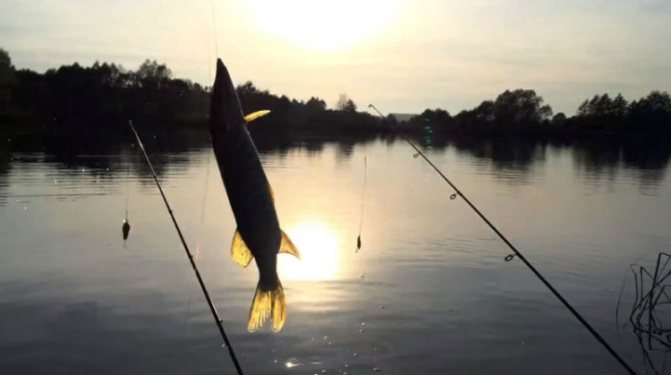
Fishing with a float
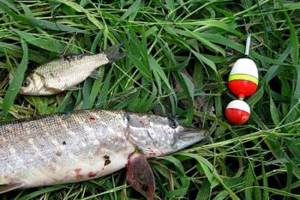
The simplest hooks and rods are used. The rod must be equipped with guides and reel clamps. The length of the fishing rod is no more than 3 meters, the reel is suitable for any type, but there must be a brake. The line or braid is selected according to the weight category of future trophies, and a tee or other type of hook is selected using the same principle. To catch simple and small grass, you do not need to install a thick line and a large tee.
You need to wind at least 50 meters of fishing line onto the reel. For the leash, a steel version is used, secured to the main line with a carabiner.

Using a simple swivel will prevent twisting. For the float you will need to use the largest one. It must keep the bait and weight afloat.
The weight limits the movement of the bait and keeps it in a small area. For a lake or river with a small current, it will be enough to install a sinker of 10 g. When fishing in a current, the sinker must be placed heavier. You can use different hooks for tackle. Tees will also work. Simple single and double hooks. You can fish from the shore or from a boat. But it’s better to place several and monitor the behavior of the float. You can also cast long distance, but this can damage the bait and there will be no bite.
Fishing with a bottle
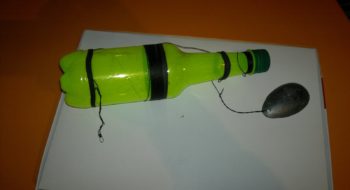
But if they need to catch a decent trophy, fishermen switch to using another, simple, but very effective gear. For fishing, you will need to prepare 8 m of fishing line or braid, an elastic band for money, a tee or any other hook. It is better if the bottle has indentations at the top and bottom. The lid must be screwed on. According to the principle of operation, this is one of the forms of circles and girders, but easier to manufacture.
We make a loop at the neck and tighten it. To be safe, you can tie the line around the neck again. We wrap the upper recess of the bottle with wood, and wrap the lower recess with loops of an elastic band for money or a simple rubber band. At the second end we make a simple rig for catching predators. You can fish with a bottle both from the shore and from a boat. Having measured the required depth, we place a loop of fishing line under the elastic band.
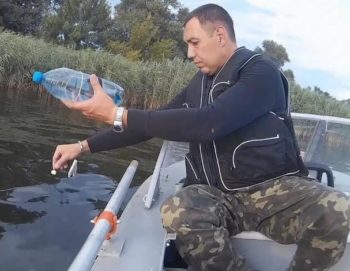
The bottle lies on the water, or in a slightly elevated position, or stands upright. But when waiting for a bite, the bottle is positioned neck down. After the pike attacks, the loop of the fishing line comes out from under the rubber band, and the bottle turns upside down. The fisherman can clearly see this; all that remains is to pull out the trophy.
Some fishermen advise painting the bottle a bright color, but the pike may see a bright spot on the surface and leave. Therefore, you can tighten the lid with a red or other bright color. But it should be borne in mind that a large pike can easily be towed into any nook of the reservoir. Therefore, it is better to use this method from a boat, then chasing the fleeing tackle will add an additional gambling feature to fishing.
To ensure good stability of the “float”, you can pour a little water into the bottle. After the flip, all that remains is to catch up with the tackle and perform the hook. With such gear you can fish large areas of a reservoir; live bait can easily tow it to the predator’s hunting spot.
Donka with live bait
Catching pike with live bait from a boat using a donkey or float tackle can be unsuccessful. This is due to the caution of the pike: when it sees the shadow of the boat, it will leave to look for another, quieter place. But at a depth of more than 6–7 meters, you can fish this way. When fishing for pike from the shore, this method is the most productive, especially in areas of the bottom with large differences in depth.

To prepare, you will need to use a spinning rod with any reel. Casting bait over 15–20 meters is not recommended. It is better to immediately prepare fishing line or braid for larger fish. Up to 4 round weights weighing up to 10 g are placed on it. A swivel is tied below, and a steel leash with a large hook attached is attached to it on a carbine.
The strength of a predator largely depends on the region where it lives, so south of the capital you can use monofilament line with a diameter of 0.7 mm for a leash; it is better to use a new line, depending on the production time. If there is the slightest damage after a pike attack, the leash must be replaced, and after 5–7 casts without a bite, the line on the leash will have to be replaced. Therefore, in order not to waste time, it is better to use a steel guitar string.
